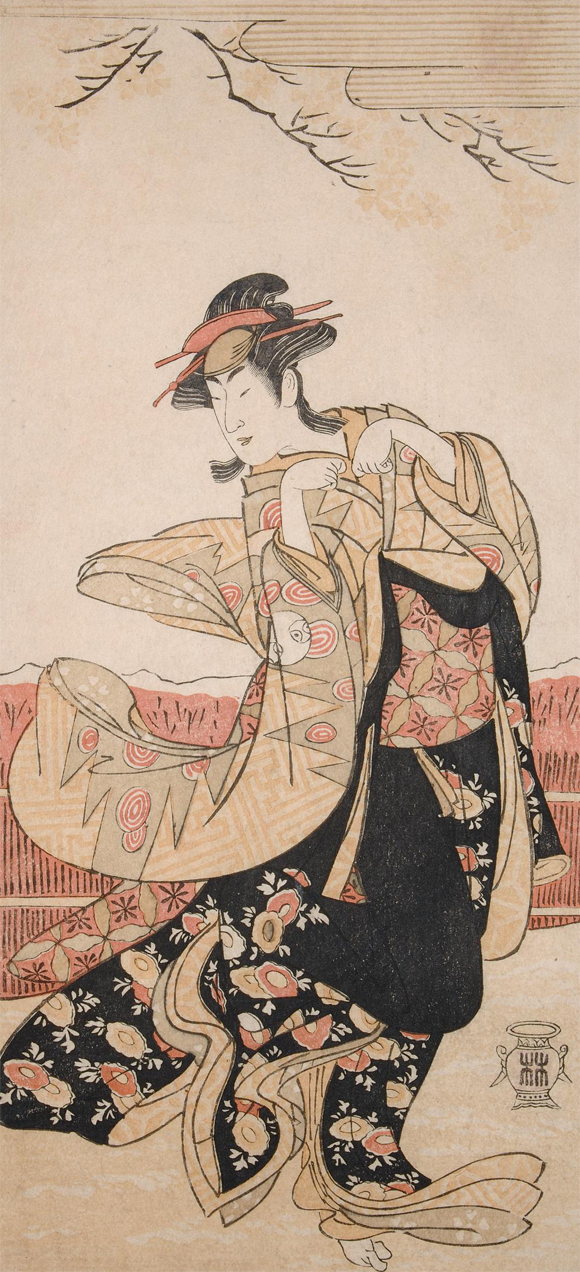| MEOTO GITSUNE |
| Play titles | Sode Furu Yuki Yoshino Shûi Kumoi no Hana Yoshino no Wakamusha Yoshinoyama Yuki no Furugoto |
| Common titles | Meoto Gitsune Matagorô Meoto Gitsune |
| Authors | Sakurada Jisuke I (lyrics) Tomimoto Itsukidayû I (music) |
| History |
The Tomimoto-based dance-drama "Sode Furu Yuki Yoshino Shûi" was premiered in the 11th lunar month of 1786 at the Nakamuraza [more details]. It was staged within the kaomise drama "Kumoi no Hana Yoshino no Wakamusha". The kaomise drama fell into oblivion but the dance-drama has survived. It was revived and staged under the title "Yoshinoyama Yuki no Furugoto" in the 9th lunar month of 1840 at the Ichimuraza with a Tokiwazu ensemble [more details]. It is nowadays staged under the title "Meoto Gitsune". |
| Key words |
Ben-no-Naishi Hiren Densetsu Kanjo Kaomise Buyô Kawachi Kitsune Kusunoki Masatsura Nanbokuchô Jidai Shosagoto Tokiwazu Tomimoto Tsuzumi Yoshinoyama |
| Summary |
At Kusunoki Masatsura's residence on Mt. Yoshino, a tsuzumi hand-drum, which holds sentimental value as the keepsake of the deceased kanjo Ben-no-Naishi, the lover of Masatsura, resonates in memory of his enduring love for her. In an unexpected turn of events, Ben-no-Naishi herself pays a visit to Masatsura, accompanied by a retainer named Matagorô. Masatsura, curious about what is happening at the imperial court, inquires, and her deceased lover eloquently describes them through dance. The exchange of sake cups unfolds, with Matagorô captivating Masatsura with an entertaining dance. Suspecting something amiss, Masatsura carefully observes the visitors. He discerns that the footprints left in the snow are not human but those of foxes. Upon questioning, it is revealed that the fox disguised as Matagorô is the Tsukamoto male fox from the Province of Kawachi, and the fox assuming the guise of Ben-no-Naishi is his wife, the Chieda female fox. Moreover, the Tsukamoto fox is identified as a young fox whose parents' skins were used to make the tsuzumi, the cherished keepsake of Masatsura. Legend has it that whenever this very tsuzumi is played, it summons dark clouds and torrential rain. Touched by the young fox's profound devotion to its parents, Masatsura bestows the tsuzumi upon Matagorô and Chieda. Overjoyed, the fox couple returns to their village, cradling the tsuzumi close to their hearts. |
 |
|
The Kabuki actor Arashi Murajirô in the role of Chieda female fox in the play 'Sode Furu Yuki Yoshino Shûi' performed at the Nakamura theatre Edo, from the eleventh month, 1786 |
|
|
| Contact | Main | Top | Updates | Actors | Plays | Playwrights | Programs | Links | FAQ | Glossary | Chronology | Illustrations | Prints | Characters | Derivatives | Theaters | Coming soon | News |